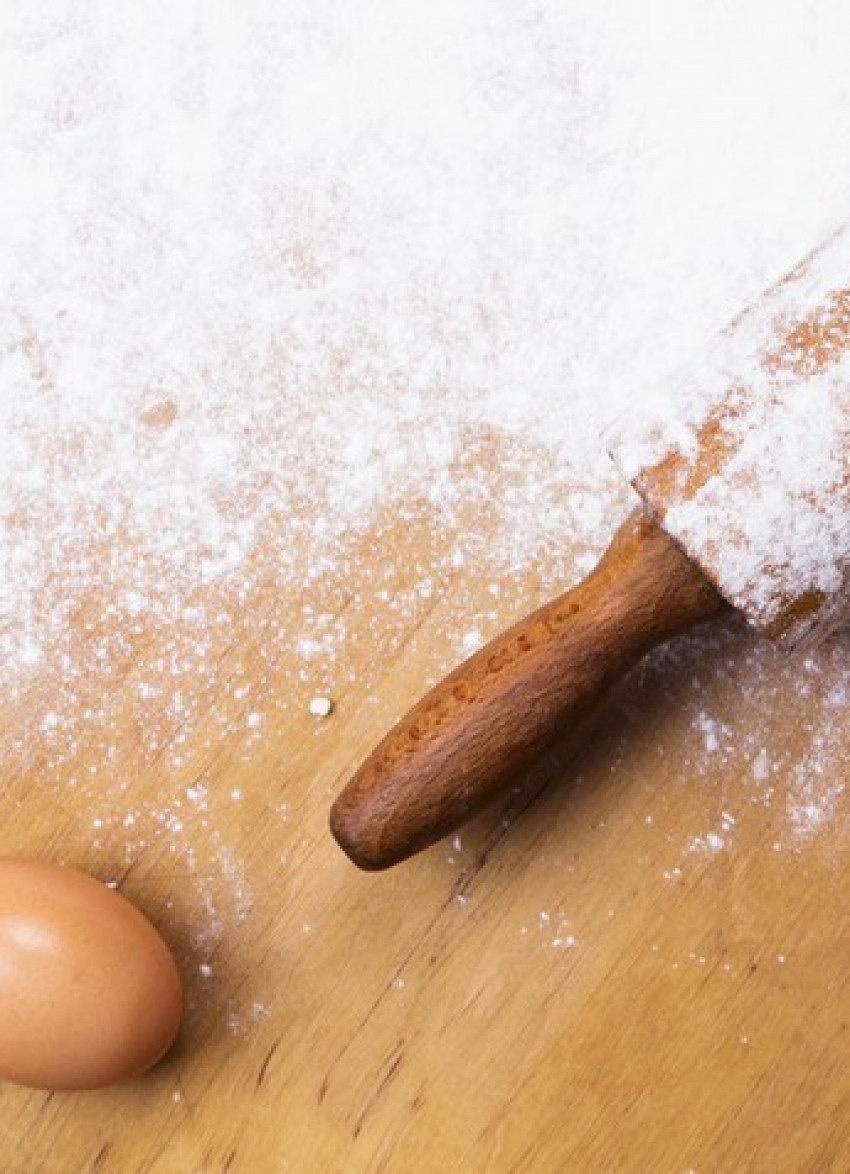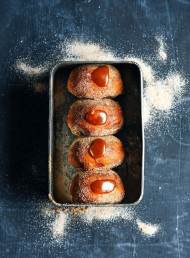A guide to baking: sure to rise

Cakes looking a little flat? Food Editor Claire Aldous has some advice on how to get the best out of your baking every time…
Baking a special something for someone is a sure-fire way to elicit exclamations of delight from the recipient. It might seem easier to trek across town to that special little bakery than it is to whip something up yourself (and sometimes circumstances dictate that this is the only option), but when time and inclination permits, the sense of achievement and the glorious aromas filling the house can never be matched by something sitting in a cardboard cake box.
Even someone who rarely ventures into the kitchen can produce a simple lemon loaf if they follow a few basic rules. Baking is a science; it’s not just a matter of throwing together whatever takes your fancy. And, if you know you’ll get a great result, following a recipe makes life easier.
Many people ask the same questions about their cake baking failures. While there are very technical reasons for many mistakes, a few simple adjustments can make all the difference to the end result. The three most common pitfalls are:
The Volcanic Look – having the oven temperature too high means the sides of the cake will set very quickly, while the still liquid centre has nowhere to go but up, resulting in a peaked volcano cake. Very few cakes are cooked above 180°C. The fan bake function can be quite fierce in some ovens, so try cooking cakes with the bake function instead to see if it makes a difference.
The Sunken Chest – there can be two reasons for this: the first is that the cake has not cooked through completely before being removed from the oven, resulting in a heavy, moist centre that will collapse on cooling. Test it with a skewer and if it comes out with wet crumbs attached the cake isn’t cooked. If the skewer comes out clean, it is cooked. However, this rule doesn’t apply to some cakes and brownies that are supposed to be very moist.
The second reason is that too much raising agent, such as baking powder or baking soda, was added. The cake will rise very fast then collapse in the centre because the batter hasn’t had time to set.
The Fallen Fruit – dried fruit sinking to the bottom of the cake can be because the batter isn’t thick enough to support it. ie a light, airy sponge cake mixture. Tossing the dried fruit in a little flour before adding it to a fruit cake batter can be helpful.
A few basic rules to follow when baking:
- preheat the oven to the correct temperature and have the shelves in the right position. Most baking is cooked sitting on the centre shelf. Recipes generally state if they need to be cooked in a higher or lower position in the oven.
- a tin of the correct size is vital for the recipe to succeed. Tins are generally filled half to two thirds full with mixture. Too small a tin will mean some of the batter will overflow and the remaining mixture will collapse back into the tin, creating a dense texture. Too large a tin will mean the cake won’t rise to the top and the sides will shield the batter from baking evenly.
- a dull metal cake tin is preferable to a bright, shiny tin. Dark tins absorb heat and distribute it more evenly, whereas shiny tins reflect the heat and slow the cooking process. If your cake recipe needs long, slow cooking (as with a dense fruit cake), it’s a good idea to line the tin with a double thickness of baking paper to prevent the sides drying out and over-browning before the centre is cooked.
- the importance of measuring ingredients accurately cannot be overstated, especially with baking. Always follow one set of measurements in a recipe, don’t mix metric and Imperial. Ideally every kitchen should be equipped with a set of scales, measuring spoons and cups for dry ingredients and a measuring jug for liquids. Teaspoon, tablespoon and cup measures are level, not heaped, unless otherwise indicated.
- ensure you have all the ingredients for the recipe and that they are at room temperature. If the eggs are in the fridge and time is short, put them in a bowl of warm tap water for a few minutes. If chocolate or butter has to be melted and cooled, do this before starting to mix the remaining ingredients. The same applies to roasting nuts, coconut and spices or seeds. These are always added cold to cake batters. Some ingredients can easily be changed to suit what is at hand – citrus can be orange, lemon, lime, mandarin or even a little grapefruit zest; nuts can be almonds, walnuts, pecans, macadamias, hazelnuts, cashews, pine nuts, pistachios and sometimes peanuts.
- creaming butter and sugar until light and fluffy is a crucial step that many people get wrong when baking a cake. Don’t rush it – it takes a good five minutes to transform these two ingredients into the required state. If they are only just combined the cake will be flat and not rise properly.
- over-mixing batter will develop the gluten and make the cake tough. When adding dry and liquid ingredients to the creamed mixture use a large metal spoon to fold in half the dry ingredients first, then fold in the wet and remaining dry ingredients, mixing only enough to bring the batter together.
Spend some time baking in your kitchen – turning out tempting treats could be the most rewarding experience you have had in a long time!
latest issue:
HOLIDAY
dish HOLIDAY is your go-to magazine for summer entertainment. Chock-full of recipes to share in the warmer weather dish HOLIDAY is a one-off special edition, designed for the beach, bach, boat or back yard. Different than a regular issue of dish, it is dedicated to making the most of warm-weather leisure time, including barbecue and salad recipes, Spotify playlists, a beach read, crosswords and puzzles, fish and chip and ice cream guides and much more.
This issue is not part of the 12-month subscription and is available only at retail in Aotearoa New Zealand.





